
THERMO PRODUCTS, LLC.
POST OFFICE BOX 217
NORTH JUDSON, IN 46366
PHONE: (574) 896-2133
MO-422
ECN 4528-MA
MADE IN USA
GAS-FIRED OR OIL-FIRED FURNACE
DOWN FLOW & DIRECT VENT (SEALED COMBUSTION)
MODELS: OMC-70 AND GMC-85
INSTALLATION AND SERVICE MANUAL
For installation in:
1. Manufactured Homes
2. Modular Homes/Buildings
3. Site Construction—Residential (Single Story Dwellings)
:
FOR YOUR SAFETY
Do not store or use gasoline or other flammable vapors and liquids in the vicinity of this or
any other appliance.
WHAT TO DO IF YOU SMELL GAS
• Do not try to light any appliance.
• Do not touch any electrical switch; do not use any phone in your building.
• Immediately call your gas supplier from a neighbor’s phone.
Follow the gas supplier’s instructions.
• If you cannot reach your gas supplier, call the fire department.
: If the information in these instructions is not followed exactly, a fire or explosion may result
causing property damage, personal injury or loss of life.
: Improper installation, adjustment, alteration, service, or maintenance can cause injury or property
damage. Refer to this manual. For assistance or additional information consult a qualified installer, service
agency, or fuel supplier.
: Do not use this appliance if any part has been underwater. Immediately call a qualified service
technician to inspect the appliance and to replace any part of the electrical or control system that has been
underwater.
PLEASE READ THESE INSTRUCTIONS PRIOR TO INSTALLATION, INITIAL FIRING, AND BEFORE
PERFORMING ANY SERVICE OR MAINTENANCE. THESE INSTRUCTIONS MUST BE LEFT WITH THE USER
AND SHOULD BE RETAINED FOR FUTURE REFERENCE BY QUALIFIED SERVICE PERSONNEL.

All installations and services must be performed by qualified service personnel.
1
I. SAFETY SECTION
This page and the following two pages contain various warnings and cautions found
throughout this furnace Service and Installation Manual. Please read and comply with the
statements on the cover and the statements below.
: All local codes and ordinances must be followed with regard to the oil tank and oil
lines. All lines must have shut off valves, use a proper pipe joint compound (specified for use
with oil) on all pipe threads, no kinks, no sharp bends, and be properly tested for leaks. Flare
fittings are recommended for tubing.
: This furnace is not to be used as a construction heater.
: DO NOT RUN THE OIL PUMP DRY FOR MORE THAN FIVE MINUTES.
: When testing electrical equipment, always follow standard electrical procedures
and precautions.
: The heat exchanger must be cleaned by a qualified service person.
: The area around the furnace should be kept free and clear of combustible
materials, especially papers and rags.
: NEVER burn garbage or refuse in your furnace. NEVER try to ignite oil or gas
by tossing burning papers or other material into your furnace.
: Thermo Pride oil furnaces are designed to burn commercial standards of No. 1
and No. 2 fuel oil. NEVER USE GASOLINE OR A MIXTURE OF OIL AND GASOLINE.
: Do not attempt to start the burner when: 1. Excess oil has accumulated 2. The
furnace is full of vapors or 3. The combustion chamber is very hot. If one or more of these
conditions exist, contact a qualified service person.
: If the temperature rise exceeds 100°F, the heat exchanger may fail voiding the
heat exchanger warranty resulting in property damage, personal injury or loss of life.
: Burner adjustments must be confirmed by instrumentation. Failure to use
accurate or calibrated instrumentation to setup the burner may result in reduced efficiency,
sooting and/or the production of hazardous carbon monoxide gas.
: Any attempt to relocate safety controls or replace safety controls with a control
that is not approved or incompatible, may result in personal injury, substantial property
damage or death.

All installations and services must be performed by qualified service personnel.
2
: If you do not follow these instructions exactly, a fire or explosion may result
causing personal injury, loss of life or property damage.
: NEVER use gasoline or a mixture of oil and gasoline to start the burner or
furnace.
: HAZARD OF ASPHYXIATION: Negative pressure inside the closet with closet
door closed and the furnace blower operating shall be no more negative than minus 0.05 inch
water column.
: Do not obstruct any return air openings, including the return grille on the
furnace. To do so may cause the furnace to activate the high limit and shut down or it may
cause asphyxiation.
: Because of the potential of odorant fade, a gas leak may not be detected by smell.
If this furnace is installed below grade, contact your gas supplier for a gas detector.
: All gas pipe connections must be leak tested using a strong soap and water
solution (with the gas turned on). Any leaks must be repaired immediately after turning off the
gas supply. A final test for gas leakage must be made after purging the gas line.
: DO NOT wet electronic components during the leak test. Wetting electronic
components may damage circuitry and cause a hazardous situation. Dry moisture from all
leads and terminals if wetting occurs. Wait at least 24 hours for the circuit to fully dry before
energizing the system.
: The furnace and its gas valve must be disconnected from the gas supply during
pressure testing of the gas supply system at pressures in excess of 1/2 PSIG or 13.9 inches
W.G. The furnace can be isolated from the gas supply by closing its manual shut off valve at
test pressures equal to or less than 1/2 PSIG or 13.9 inches W.G.
: Copper and brass tubing and fittings (except tin lined) shall not be used if the gas
contains more than a trace (0.3 grains per 100 cubic ft.) of hydrogen sulfide gas. Check with
your gas supplier.
: All local codes and ordinances take precedence with regard to tank and oil lines.
All lines must have shutoff valves, a good pipe joint compound approved for use with oil on all
pipe threads, no kinks, no sharp bends and be properly tested for leaks. Flare fittings are
recommended for tubing.
: Do not use motor oil or any fuel other than No. 1 or No. 2 fuel oil in this furnace.

All installations and services must be performed by qualified service personnel.
3
: If you suspect there is a problem with the furnace, the venting system or any other
related problem, immediately contact a qualified service agency. If a service agency is not
available contact your fuel supplier.
: Personal injury, or property damage, could result from major repair or service of
this furnace by anyone other than a qualified contractor. Only the routine maintenance
described in the user section of this manual should be performed by the user.
: The area around the furnace should be kept free and clear of combustible
materials, especially papers and rags.
: Never burn garbage or refuse in your furnace. Never try to ignite oil or gas by
tossing burning papers or other material into your furnace.
: Do not attempt to start the burner when:
1. Excess oil or gas has accumulated.
2. The furnace is full of vapors.
4. The combustion chamber is very hot.
If one or more of these conditions exist, contact a qualified service person.
: Do not block or obstruct air openings on the furnace or air openings
communicating with the area in which the furnace is installed.
: Do not allow the outside air intake to be blocked or obstructed by vegetation, ice,
snow or any other materials.
: Do not use this furnace if any part has been underwater. Immediately call a
qualified service agency to inspect the furnace and to replace any part of the electrical or
control system which has been underwater.
: Should overheating occur or the fuel supply fail to shut off, shut off the manual
fuel supply valve to the furnace before shutting off the electrical supply.

All installations and services must be performed by qualified service personnel.
4
This page and the following page contain reproductions of the various warning and
instruction labels placed on the Thermo Pride Oil Furnace. Please read and comply with
the contents of these labels.

All installations and services must be performed by qualified service personnel.
5
POWER
SWITCH

All installations and services must be performed by qualified service personnel.
6
TABLE OF CONTENTS
SECTION BEGINNING PAGE
I. SAFETY SECTION 1
II. GENERAL INSTRUCTIONS AND CLEARANCES 7
III. FURNACE SPECIFICATIONS 9
IV. INSTALLATION 11
A. ROOF JACK 11
B. STANDARD CHIMNEY 11
C. FURNACE LOCATION 11
D. BASE INSTALLATION 13
1. Combustible Floor Base Model: 70-BASE 13
2. Cottage Base Model: OMCCOT-BASE 14
E. ALCOVE INSTALLATION 16
F. CLOSET INSTALLATION 16
G. COMBUSTION AIR 17
H. FUEL PIPING 20
1. General Gas Piping 20
2. Oil Tank and Piping 21
J. ELECTRICAL WIRING 23
1. Electrical Branch Supply Circuit 24
2. Connection of Power Supply Wires 24
3. Connection of Thermostat Wires 24
4. Wiring Diagram 26
K. BURNER INSTALLATION 27
L. BURNER OPERATION AND ADJUSTMENT 28
M. FLUE GAS COMBUSTION ANALYSIS 30
V. DEALER MAINTENANCE 31
A. TROUBLESHOOTING 31
B. CAD CELL CHECKOUT PROCEDURE 37
C. HEAT EXCHANGER CLEANING INSTRUCTIONS 38
D. CLEANING OR REPLACING FLUE PIPES 39
E. EXTENDED SHUTDOWN AND RESTART 40
VI. USERS INFORMATION SECTION 41
A. WARNINGS & CAUTIONS 41
B. COMPONENT LOCATIONS 42
C. INSPECTION AREAS 42
D. FILTER LOCATION AND CLEANING 43
APPENDIX A - REPLACEMENT PARTS LIST 44

All installations and services must be performed by qualified service personnel.
7
II. GENERAL INSTRUCTIONS AND CLEARANCES
NOTE: READ THIS SECTION BEFORE STARTING INSTALLATION
1. The selection of a furnace heating capacity for a proposed installation should be based on a
heat loss calculation made according to the manuals provided by the Air Conditioning
Contractors of America (ACCA) or the American Society of Heating, Refrigeration and Air
Conditioning Engineers, Inc. (ASHRAE).
2. The installer shall be familiar with and comply with all codes and regulations applicable to the
installation of these heating appliances and related equipment. In lieu of local codes, the
installation shall be in accordance with the current provisions of one or more of the following
standards.
a. Federal Manufactured Home Constructions & Safety Standard (HUD Total 24, Part 280).
b. American National Standard (ANSI-119.2/NFPA-501C), for all recreational vehicle
installations.
c. American National Standard (ANSI-Z223.1/NFPA-54), for all gas-fired furnaces.
d. American National Standard (ANSI-Z95.1/NFPA-31), for all oil-fired furnaces.
e. American National Standard Electric Code (ANSI-C1/NFPA-70), for all electrical field
wiring.
The oil-fired furnace has been investigated under the UL 307A test standard and the gas-fired
furnace under the UL 307B test standard. Both gas and oil fired units are listed by Underwriters
Laboratories and described as, “For installation as central furnace special type for single story
dwelling.”
: The area around the furnace must be kept free and clear of combustible
materials, especially papers and rags.
: This furnace is not to be used as a construction heater.
1. Definitions of "combustible" and "non-combustible" materials as presented in the 1996
version of the National Fuel Gas Code, ANSI Z223.1-1996/NFPA 70-1996, are as follows:
a. Combustible material:
“...materials made of or surfaced with wood, compressed
paper, plant fibers, or other materials that are capable of
being ignited and burned. Such materials shall be
considered combustible even though flameproofed, fire-
retardant treated, or plastered.”

All installations and services must be performed by qualified service personnel.
8
b. Non-combustible material:
“...material that is not capable of being ignited and burned;
such as material consisting entirely of, or a combination of,
steel, iron, brick, concrete, slate, asbestos, glass, and plaster.”
This heating appliance must be installed with clearances to combustible material surfaces of not
less than the minimum distances given below. Also, allow ample clearances for servicing the
furnace for easy access to the air filter, blower assembly, burner assembly, controls, and vent
connections.
MODELS OMC/GMC CLOSET ALCOVE
FRONT
BACK
SIDES
ROOF JACK
VENT CONNECTOR
TOP
PLENUM SIDES
TOP AND SIDES OF DUCT
BOTTOM OF DUCT
6”
0”
0”
0”
6”
1”
1”
1”
1”
18”
0”
0”
0”
6”
1”
1”
1”
1”

All installations and services must be performed by qualified service personnel.
9
III. FURNACE SPECIFICATIONS
MODEL OMC-70 GMC-85
HEAT INPUT RATE (BTUH) 85,000 85,000
HEATING CAPACITY (BTUH) 71,000 69,700
BURNER NOZZLE (GPH X
ANGLE, HOLLOW CONE) 0.65X80A -------
BURNER ORIFICE-NAT. GAS --------- #17 DMS
BURNER ORIFICE-PROP. GAS --------- #36 DMS
OIL PUMP PRESSURE (PSIG) 100 -------
GAS SUPPLY PRESSURE (IN.W.G.)
MINIMUM REQUIRED
PROPANE --------- 11
NATURAL --------- 4.5
MAXIMUM ALLOWED
PROPANE --------- 13.9
NATURAL --------- 13.9
GAS MANIFOLD PRESSURE (IN. W.G.)
PROPANE --------- 10 + 0.3
NATURAL --------- 3.5 + 0.3
VENT PIPE SIZE (INCHES) 4 4
DESIGN TEMPERATURE RISE (°F) 85 85
SEASONAL EFFICIENCY
(AFUE*, %) 84 82
*AFUE - INCLUDES STEADY STATE THERMAL EFFICIENCY AND OFF CYCLE
LOSSES.
ELECTRICAL RATINGS AND SETTINGS:
ELECTRICAL SUPPLY: 120 VAC / 60HZ / 1 PHASE
MAXIMUM TIME DELAY TYPE FUSE OR HACR BREAKER RATING: 15 AMPS
TOTAL RATED CURRENT (AMPS): 11.3 (OMC), 6.81 (GMC)
NOMINAL HEAT ANTICIPATOR SETTING -- 0.2 mA (OMC), 0.8 mA (GMC)
DIMENSIONS & WEIGHTS:
CABINET: WIDTH - 18 IN., DEPTH - 24 IN., HEIGHT - 57 IN.
NO.70 MOBILE HOME BASE: WIDTH - 18 5/16 IN., DEPTH - 24¼ IN., HEIGHT - 4 IN.
WARM AIR DUCT: WIDTH – 12 IN., DEPTH – 12 IN., HEIGHT - 14 ¼ IN.
COTTAGE BASE: WIDTH – 18 3/16 IN., DEPTH - 24¼ IN., HEIGHT – 14¾ IN.
FILTER QUANTITY & SIZE: (2) @ 17 ¾ IN. x 13 ¾ IN. x 1 IN. EA.
APPROXIMATE SHIPPING WEIGHT: 240 LBS.
PRODUCT LISTED UNDER UL FILE NUMBER -- MP3241

All installations and services must be performed by qualified service personnel.
10
BURNER DATA
OMC-70 GMC-85
MANUFACTURER: R.W. BECKETT CORP. WAYNE COMBUSTION SYSTEMS
MODEL: AFG P265 FEP
AIR TUBE LENGTH (IN.): 3-5/8 3-5/8
HEAD DESIGN: F-3 --------
REFRACTORY TYPE: MHC (FIBER) MHC (FIBER)
OIL PUMP
PRESSURE (P.S.I.G.) 100 --------
FOR BURNER COMBUSTION INFORMATION, REFER TO SECTION (M) – FLUE GAS
COMBUSTION ANALYSIS.
BLOWER DATA
MANUFACTURER: MORRISON PRODUCTS, INC.
BLOWER MODEL:10-7, DIRECT DRIVE
NOMINAL MOTOR POWER OUTPUT (HORSEPOWER): 1/5
NOMINAL MOTOR SHAFT SPEED (RPM): 1075
TYPICAL AIRFLOW ON LOW FAN SPEED
@ SPECIFIED EXTERNAL
STATIC PRESSURES (SCFM @ .IN.W.G.): 780 @ 0.2, 650 @ 0.5
ALL SPECIFICATIONS ARE SUBJECT TO CHANGE WITHOUT NOTICE.

All installations and services must be performed by qualified service personnel.
11
IV. INSTALLATION
A. ROOF JACK
The roof jack assembly and accessories must be listed by a nationally recognized testing agency
for the appropriate fuel.
The roof jack assembly must be installed according to the vent manufacturer’s instructions prior
to the furnace installation. (Refer to Figure 2 for flue location on furnace.) Adapters for pitched
roofs as well as extended barrel length roof jacks are available from other suppliers.
All vent seams and connections must be sealed with high temperature silicone caulk and/or high
temperature aluminum tape.
B. STANDARD CHIMNEY
When installed as a central furnace special type for single story dwelling, venting into a metal
vent system approved by a nationally recognized testing agency for the appropriate fuel type is
permitted. Lined masonry chimneys are acceptable when sized appropriately. The minimum
chimney size should equivalent to the inside free area of the 4-inch diameter vent collar exiting
the furnace, or 12.5 square inches.
Maximum chimney sizes and acceptable installation practices are referenced in the following
publications. In lieu of local codes, when installing the OMC-70 with fuel oil, refer to the latest
edition of the installation standard NFPA 31, Installation of Oil Burning Equipment. When
installing the GMC-85 with natural or LP gases, refer to Appendix G of the latest edition of the
installation standard NFPA 54, National Fuel Gas Code.
C. FURNACE LOCATION
1. For best performance, locate the furnace so that it is centralized with respect to the duct
system.
2. This furnace is only intended for installation with free air return through the furnace door
louvers. DO NOT connect a ducted return air system directly to the furnace. Improper
installation may create a fire hazard and damage internal equipment, as well as void all
manufacturer’s warranties.
3. This furnace may be installed on combustible flooring when utilizing either the No. 70
counterflow floor base, for below the floor duct systems, or with the cottage base, for floor
level air distribution. See Figures 1 for depictions of the No. 70 and the cottage bases.
4. This furnace is U.L. listed for closet, alcove or freestanding applications. All applications
must comply with the requirements of this manual.

All installations and services must be performed by qualified service personnel.
12
Combustible Floor Base
Model: 70-BASE
Figure 1A.
Cottage Base
Model: 01COT-BASE

All installations and services must be performed by qualified service personnel.
13
Figure 1B.
D. BASE INSTALLATION
1. Combustible Floor Base Model: 70-BASE
Referring to Figure 1A, for applications using a combustion air channel and a supply air duct, use
the base as a template to mark the floor opening locations. See Figure 2 for cutout locations. Cut
a square opening in the floor for the supply air duct. Cut the opening 1-inch larger than the
square template opening. Cut the combustion air duct opening. Cut opening 1/8 inch larger than
the template opening. See Figure 1A for cutout sizes.
Figure 2.
Place the bottom base panel in position. Mark the square opening location on the distribution
duct at the connection point of feeder duct. Remove the bottom panel. Cut an opening in the duct
slightly larger than the feeder duct. Cut the feeder duct to length. (Refer to Figure 3 for location
of this cut.) Install the feeder duct. Bend over each tab. Insure an airtight seal by using high
temperature sealant or tape on the joint. Reinstall the bottom panel over the feeder duct. Insert
and secure the combustion air duct. Put the top panel in place.
IMPORTANT: A combustion air duct must be used. If the underside of the mobile home is
skirted or enclosed (e.g. enclosed in a crawlspace), the combustion air intake should exit
through the skirting, or enclosure, if at all possible. All joints and seams of supply ducts and
combustion air ducts must be closed with a sealing method suitable to the application
conditions and temperatures ( e.g. high temperature silicone caulk and/or aluminum tape).

All installations and services must be performed by qualified service personnel.
14
If the combustion air passageway cannot terminate outside of the skirting or enclosure, a
permanent opening with a minimum of 50 square inches of unobstructed infiltration (free
area) for ventilation air must be provided for adequate combustion. This permanent opening
must be located no less than 12 inches from the bottom of the enclosure or skirting.
Figure 3.
Slit the corners of feeder duct down to the top of the top panel. If metal projects more than 1 inch
above the top panel, trim the flanges down to 1 inch. While the top of distribution duct is being
pulled up with one hand, bend down each side of the feeder duct tightly to the top panel with the
other hand. This assures a tight connection between the top panel and the feeder duct and that the
distribution duct will be full size. Use high temperature tape and/or high temperature silicone
caulking on all joints and seams to minimize air leakage. Secure the top panel to the floor with
two screws in the front flange.
2. Cottage Base Model: OMCCOT-BASE
The OMCCOT-BASE cottage base (Figure 1B) is required for a freestanding cottage base
installation. The cottage base is designed to permit the installation of an 8-inch x 12-inch register
in each of the two side panels and the rear panel. This allows combustion air to be drawn from
outside, or inside, the structure whichever is appropriate, or permissible. See section G.
COMBUSTION AIR for further details regarding combustion air requirements.

All installations and services must be performed by qualified service personnel.
15
IMPORTANT: Adequate combustion air must be provided under all circumstances. If the
underside of the home is skirted or enclosed (e.g. by an enclosed crawlspace), the combustion
air intake should exit through the side of cottage base and terminate outside of the structure.
All joints and seams of supply ducts and combustion air ducts must be closed with a sealing
method suitable to the application conditions and temperatures (e.g. using high temperature
silicone caulk and/or aluminum tape).
If the combustion air passageway cannot terminate outside of the structure, a permanent
opening with a minimum of 50 square inches of unobstructed infiltration (free area) for
ventilation and combustion air must be provided to the interior of the structure. Additional
make-up air may need to be supplied to the interior of the structure to compensate for exhaust
fans, appliances, or vents which consume air from the interior of the structure.
Refer to the assembly installation instructions included with OMCCOT-BASE cottage base for
additional information.

All installations and services must be performed by qualified service personnel.
16
E. ALCOVE INSTALLATION
In this application, a minimum of 18 inches of
clearance must be provided to the front of the
unit. Refer to Figure 4.
Alcove installations must use the No. 70 mobile
home base.
Refer to section G. COMBUSTION AIR for
additional combustion air requirements.
Figure 4.
F. CLOSET INSTALLATION
: HAZARD OF
ASPHYXIATION: A suction effect
will occur when the furnace is
operating inside the closet with the
closet door closed. For proper
operation, the furnace blower shall
create no more than a 0.05-inch
water column pressure differential
between the closet and the
adjoining space.
Figure 5.
1. The return air opening into the
closet is to have a minimum free
area of 250 square inches, (refer
to Figure 5).

All installations and services must be performed by qualified service personnel.
17
2. The return air opening may be located in the top, the center or (ideally) the bottom of the
closet door, or side wall.
: Do not obstruct any return air openings, including the return grille on the
furnace. To do so may cause the furnace to activate the high temperature limit and shutdown,
or it may cause asphyxiation.
3. The cross-sectional area of the return air duct leading into the closet (when located in the
floor or ceiling) shall not be less than 250 square inches.
4. The total free area of openings in the floor or ceiling registers serving the return air duct
system must be at least 350 square inches. At least one register must be located where it is
not likely to be covered by carpeting, boxes, furniture, or any other objects.
5. Materials located in the return duct system must have a flame spread classification of 200 or
less.
6. Pans made of a non-combustible material having 1 inch upturned flanges are to be located
beneath openings in a floor, return air, duct system.
7. Wiring materials located in the return air duct system must conform to Article 300-22 of the
latest edition of the National Electrical Code, NFPA 70.
8. Gas piping shall not be located in, or extend through, the return air duct system.
9. Refer to section G. COMBUSTION AIR for additional combustion air requirements.
G. COMBUSTION AIR
The furnace requires the proper amount of combustion air be available to combust the fuel
cleanly and efficiently. An inadequate combustion air supply can result in unsafe and erratic
operation of the burner, sooting of the combustion chamber and the heat exchanger, and possibly,
offensive fuel odors. The combustion air intake must provide an adequate source of combustion
air to the appliance. Refer to part 5.3 of the National Fuel Gas Code, ANSI Z223.1 / NFPA 54-
1999, or latest edition for application specific combustion air requirements.

All installations and services must be performed by qualified service personnel.
18
The preferred location of the outside combustion air intake termination (e.g. an optional stainless
steel intake hood, part no.370183) is through the side of the structure, skirting or enclosure. An
alternate termination location is under the structure in the skirted or crawlspace area providing a
minimum of 50 square inches of free area exists around the perimeter for outside combustion air
to be drawn through.
The furnace is shipped with a combustion air duct that must be installed in the bottom of the
burner enclosure, before the burner is installed. This 2-inch by 7-inch duct is shipped in two
pieces. High temperature silicone sealant should be applied to both vertical seams, before it is
snapped together with four flanges on one end. The duct must then have high temperature
silicone applied to the flanges. Then, the combustion air duct can be inserted through the opening
in the floor base model no.70. When the combustion air duct has been inserted completely,
secure the duct to the combustion adapter with self-tapping sheet metal screws, refer to Figure 6.
Make certain that the flanges, duct, and adapter are completely sealed to the burner enclosure
base with high temperature silicone caulk.
NOTE: The adapter may be cut with sheet metal shears to the appropriate size and secured over
the inlet air duct opening. The adapter will convert the rectangular opening to a round connector
ring. The ring will allow the connection of 2-inch I.D. flexible hose (provided) between the
adapter and the inlet air boot, attached to the burner. Secure both ends of the flex hose with hose
clamps (provided).
A 2-inch round to 7-inch x 4-inch rectangular, sheet metal, transition boot is supplied with the
furnace for adapting a 4-inch round combustion air duct to the 2-inch x 7-inch combustion air
duct. This boot has a screen inserted into the 4-inch round portion of the boot to provide a degree
of protection from pests entering the furnace when the boot is terminated in the crawl space, or
skirted area, directly below the furnace.
The material recommended for the combustion air duct is smooth, round, galvanized steel duct or
schedule 20 PVC pipe. The maximum duct length allowed is equivalent to 40-feet of straight
duct. Reduce this length by 6-feet for the intake hood and each 90-degree elbow used, and by 3-
feet for each 45-degree elbow used the combustion air duct. Flexible, spiral, or corrugated duct is
not recommended, due to the relatively high pressure drop associated with air movement through
this type of passageway.

All installations and services must be performed by qualified service personnel.
19
Figure 6.
Page is loading ...
Page is loading ...
Page is loading ...
Page is loading ...
Page is loading ...
Page is loading ...
Page is loading ...
Page is loading ...
Page is loading ...
Page is loading ...
Page is loading ...
Page is loading ...
Page is loading ...
Page is loading ...
Page is loading ...
Page is loading ...
Page is loading ...
Page is loading ...
Page is loading ...
Page is loading ...
Page is loading ...
Page is loading ...
Page is loading ...
Page is loading ...
Page is loading ...
Page is loading ...
-
 1
1
-
 2
2
-
 3
3
-
 4
4
-
 5
5
-
 6
6
-
 7
7
-
 8
8
-
 9
9
-
 10
10
-
 11
11
-
 12
12
-
 13
13
-
 14
14
-
 15
15
-
 16
16
-
 17
17
-
 18
18
-
 19
19
-
 20
20
-
 21
21
-
 22
22
-
 23
23
-
 24
24
-
 25
25
-
 26
26
-
 27
27
-
 28
28
-
 29
29
-
 30
30
-
 31
31
-
 32
32
-
 33
33
-
 34
34
-
 35
35
-
 36
36
-
 37
37
-
 38
38
-
 39
39
-
 40
40
-
 41
41
-
 42
42
-
 43
43
-
 44
44
-
 45
45
-
 46
46
Thermo Products Thermo OMC-70 User manual
- Type
- User manual
Ask a question and I''ll find the answer in the document
Finding information in a document is now easier with AI
Related papers
-
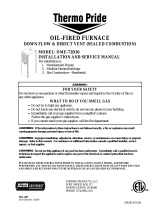 Thermo Products ome-72d36 User manual
Thermo Products ome-72d36 User manual
-
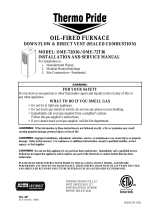 Thermo Products OME72D36 Installation guide
Thermo Products OME72D36 Installation guide
-
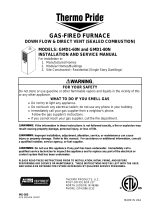 Thermo Products GMD1-60N User manual
Thermo Products GMD1-60N User manual
-
 Thermo Products CMA2-75N User manual
Thermo Products CMA2-75N User manual
-
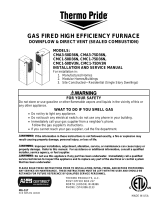 Thermo Products CMC1-50D36N User manual
Thermo Products CMC1-50D36N User manual
-
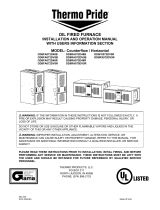 Thermo Products OD6FA072DV5R User manual
Thermo Products OD6FA072DV5R User manual
-
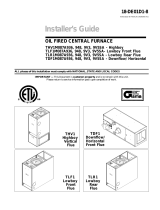 Thermo Products TDF1M087A948 Installation guide
Thermo Products TDF1M087A948 Installation guide
-
Thermo Products OL11-105 User manual
-
Thermo Pride MHA1-100N User manual
-
 Thermo Products OH6FA072D48 Installation guide
Thermo Products OH6FA072D48 Installation guide
Other documents
-
Thermo Pride OMC Owner's manual
-
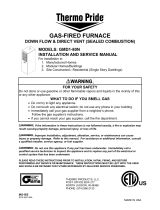 Lodge Manufacturing GMD1-80N User manual
Lodge Manufacturing GMD1-80N User manual
-
Thermo Pride OME Owner's manual
-
Thermo GMD2 Owner's manual
-
Thermo Pride GMD1-80N User manual
-
Thermo Pride CMA4 Owner's manual
-
Thermo Pride CMC1 Owner's manual
-
Miller CMF2 80 PG Installation guide
-
Dettson AMP300 Owner's manual
-
Miller CMF2 80 PO User manual






















































